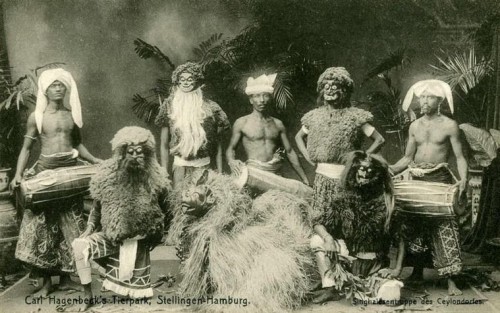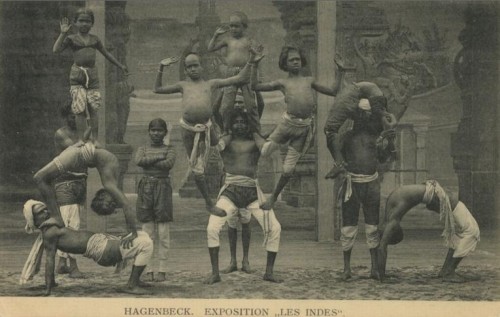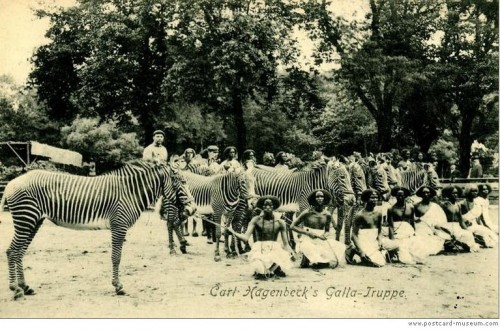Human Zoos at the Turn of the 20th Century
Posted on August 10th, 2018
***TRIGGER WARNING for racism and enslavement***
During a dark period of world history, intellectuals pondered where to draw the line between human and animal. They arrayed humans hierarchically, from the lightest to the darkest skin. Believing that Africans were ape-like, they weren’t sure whether to include apes as human, or Africans as apes.
One artifact of this thinking was the human zoo.” Kidnapped from their homes at the end of the 19th century and into the next, hundreds of indigenous people were put on display for white Westerners to view. Often they were displayed in villages built in zoos specifically for the show,” according to a Spiegel Online sent in by Katrin, but they were also made to perform on stage for the amusement of a paying public.” Many died quickly, being exposed to diseases foreign to them.
This group of captives is from Sri Lanka (called Ceylon at the time):
This photograph commemorates a show called Les Indes,” featuring captives from India:
These captives are from Oromo in Ethiopia:
A German named Carl Hagenbeck was among the more famous men involved in human zoos. He would go on expeditions in foreign countries and bring back both animals and people for European collections. In his memoirs, he spoke of his involvement with pride, writing: it was my privilege to be the first in the civilized world to present these shows of different races.”
The zoo in Hamburg still bears his name.
Lisa Wade, PhD is a professor at Occidental College. She is the author of American Hookup, a book about college sexual culture, and a textbook about gender. You can follow her on Twitter, Facebook, and Instagram.